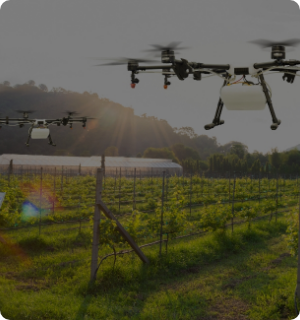Key Highlights
- This article explores data scraping as an automated technique for extracting data from websites, highlighting benefits such as efficient data collection for extensive datasets and real-time updates for agile decision-making in dynamic markets.
- This article explores how data scraping enables competitive analysis by monitoring market trends and competitor strategies, enhancing strategic decision-making.
- The article also delves into legal and ethical considerations, ensuring readers grasp the importance of adhering to regulations when employing data scraping for business intelligence purposes.
What is Data Scraping?

Data scraping, also known as web scraping, is a technique utilized to extract information from various online sources, especially websites. Essentially, it employs automated processes or scripts to navigate through web pages, download HTML content, and extract specific data elements. This method facilitates the structured collection of data from the internet, contributing to applications like research, market analysis, and business intelligence. While data scraping proves valuable for efficiently gathering information, users must be mindful of legal and ethical considerations, as some websites may have terms of service that regulate or prohibit scraping activities. This article will delve into the Advantages of Data Scraping.
Top 5 Advantage of Data Scraping
- Efficient Data Collection
- Real-time Data Updates
- Competitive Analysis
- Market Research
- Time and Cost Efficiency
Efficient Data Collection
- At the core of its merits lies the prowess of efficient data collection. By automating the process of gathering information from websites, data scraping becomes a catalyst for rapid and effective data acquisition.
- This proves invaluable, especially when confronted with vast amounts of data that would be impractical to collect manually. Organizations can leverage this capability to harness the full potential of big data, extracting actionable insights that drive informed decision-making.
Real-time Data Updates
- In dynamic sectors, particularly finance, the ability to obtain real-time updates is paramount. Automated data scraping emerges as a linchpin, offering users the capability to access up-to-the-minute information from websites.
- In industries where split-second decisions can significantly impact financial outcomes, this becomes a strategic asset, empowering decision-makers with the latest insights needed for agile and responsive strategies.
Competitive Analysis
- For businesses navigating the competitive landscape, data scraping becomes an invaluable tool for gaining a competitive edge. Through continuous monitoring of competitor websites, organizations can glean insights into competitor strategies, pricing structures, and product offerings
- This holistic awareness enables businesses not only to adapt swiftly to market trends but also to make informed decisions that fortify their competitive position.
Market Research
- The application of data scraping extends seamlessly into the domain of market research. Researchers and businesses can leverage scraping techniques to delve into consumer behavior, analyze product reviews, and distill industry trends.
- This trove of information becomes indispensable for shaping effective marketing strategies, identifying emerging opportunities, and staying attuned to the evolving demands of the market.
Time and Cost Efficiency
- Beyond sector-specific applications, one cannot overlook the overarching advantage of time and cost efficiency inherent in data scraping. Automation expedites the data collection process and substantially reduces the resources and time traditionally required for manual data entry and extraction.
- This efficiency is invaluable for businesses seeking to optimize operations, allocate resources judiciously, and focus on strategic initiatives that drive organizational growth.
How does Data Scraping Work?
01. Sending a Request
A request is sent to the targeted website’s server. This request is similar to how a web browser requests a webpage. It asks the server to send the HTML content of the webpage.
02. Receiving HTML Content
The server responds by sending the HTML content of the webpage back to the requester. HTML (Hypertext Markup Language) is the standard language for creating webpages and includes the structure and content of the webpage.
03. Parsing HTML
The HTML content is parsed to identify and extract specific elements, such as text, images, links, or other data. This step is crucial as it involves locating the relevant information within the HTML structure.
04. Data Extraction
The identified data is extracted and transformed into a structured format. This can involve cleaning and organizing the data to make it usable for analysis or storage.
05. Storage or Analysis
The extracted data can be stored in a database, spreadsheet, or other formats for later use. Alternatively, it can be analyzed in real-time to derive insights or trigger automated actions.
Top 5 Data Scraping Use Cases
Lead Generation
Data scraping is widely employed for lead generation in sales and marketing. By extracting contact information, job titles, and company details from websites and social media, businesses can build targeted lists of potential customers. This facilitates personalized outreach and enhances the effectiveness of lead generation efforts.
Price Monitoring
E-commerce businesses utilize data scraping to monitor and track pricing information from competitors’ websites. This allows for dynamic pricing strategies, ensuring competitiveness in the market. Automated price monitoring helps businesses adjust their pricing strategies in real-time, optimizing their positioning and maximizing profits.
Sentiment Analysis
Data scraping from social media platforms and review sites enables sentiment analysis, providing valuable insights into public opinion about products, services, or brands. This information is crucial for businesses to understand customer perceptions, address issues, and tailor marketing strategies based on sentiment trends.
Market Research
Researchers leverage data scraping to collect vast amounts of data for market analysis. This includes consumer behavior, product reviews, and industry trends. The automated extraction of this data streamlines the market research process, allowing businesses to make data-driven decisions and stay ahead in a rapidly evolving market.
Brand Monitoring
Data scraping is instrumental in monitoring online mentions and discussions related to a brand. By extracting information from social media, forums, and news articles, businesses can gauge the public’s perception of their brand. Brand monitoring helps in managing reputation, identifying areas for improvement, and staying proactive in addressing issues before they escalate.
Related Insights












